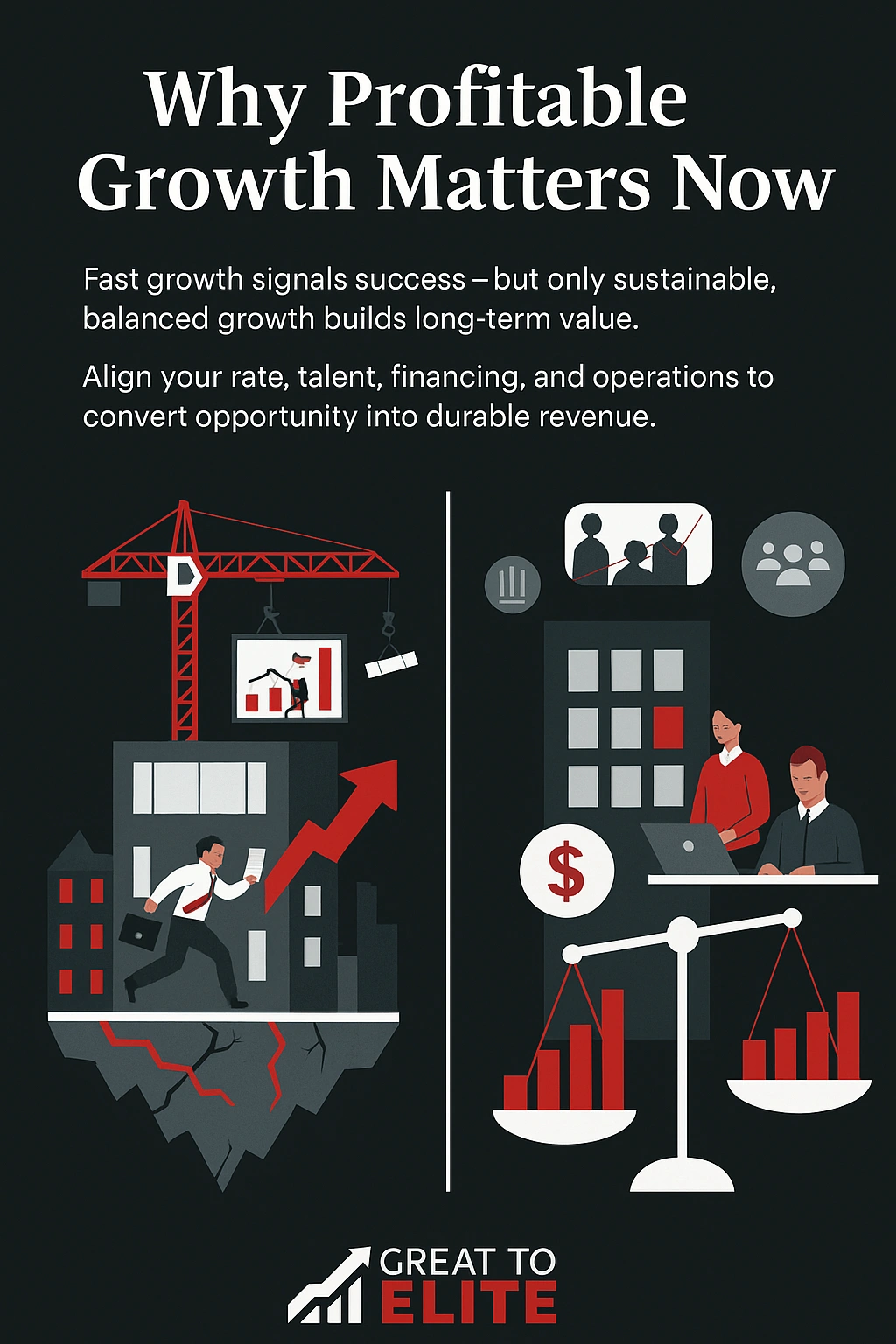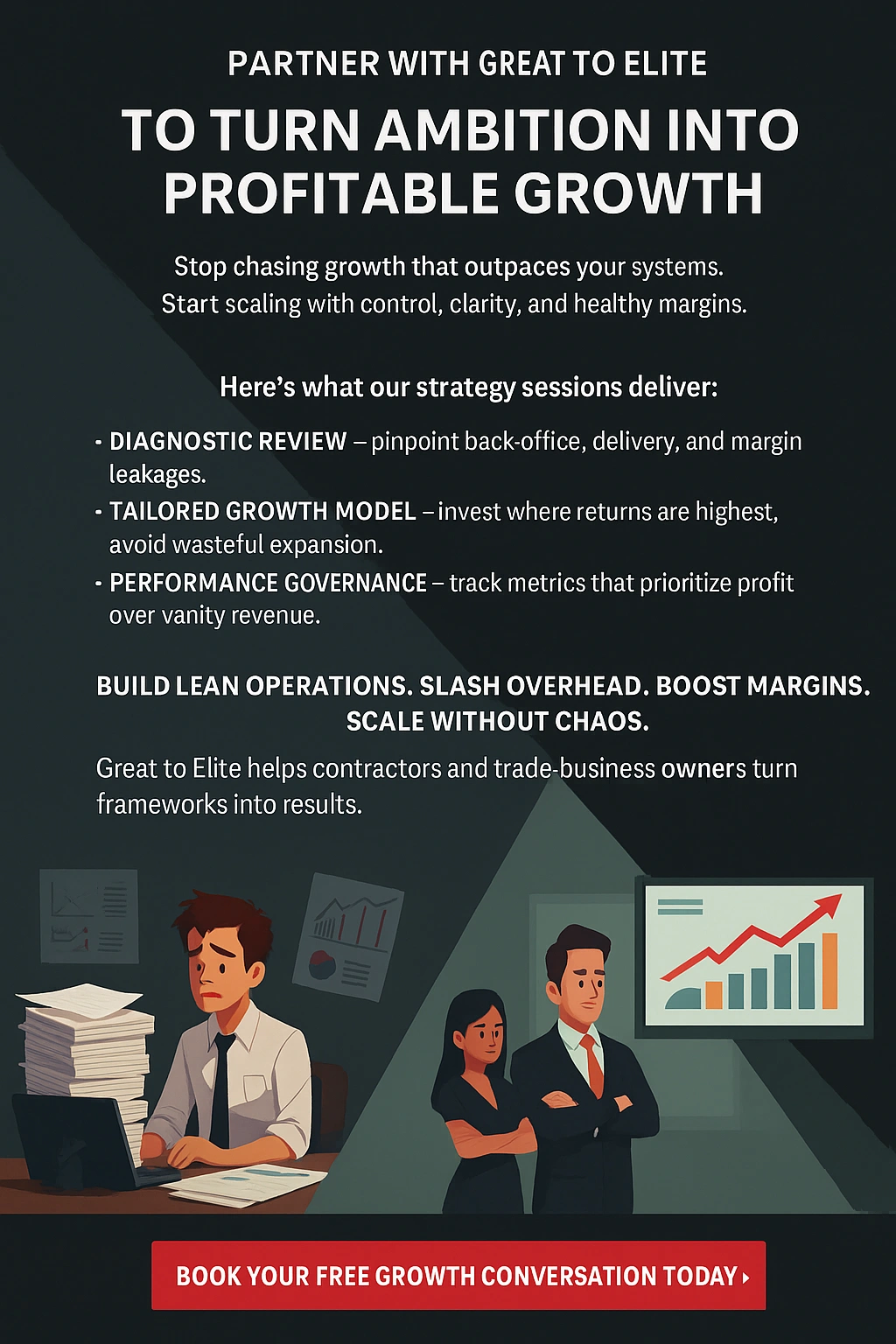Profitable Growth Strategies








Profitable growth is the process of expanding a business in a way that not only increases revenue but also ensures that each new dollar earned contributes positively to the company’s bottom line.
Unlike growth that focuses solely on top-line sales, profitable growth emphasizes efficiency, smart investment, and sustainable margins, allowing businesses to scale without sacrificing financial health.
Investors and boards often judge firms by how fast their revenue climbs. That makes your expansion rate a primary signal to leaders, employees, and external stakeholders.
Yet research shows most companies barely outpace inflation over long spans. Only a few industries or firms sustain superior performance for decades. In fact, in general service-based businesses often operate with net profit margins of about 10%–20%, though firms with specialized expertise or lower overheads may exceed 25%.
You should balance demand with supply-side capability. Reactive moves, hiring binges, rapid capacity builds, and infrastructure sprawl, create systems strain. That strain later reduces returns and can damage culture.
When you align rate, talent, financing, and operations, your business converts opportunities into durable revenue with fewer costly reversals.

Build an evidence-based snapshot of financial, customer, and team signals.
Triangulate performance using three lenses: financial statements, pipeline and sales data, and qualitative feedback from customers and employees. This mix reveals where revenue, service, and retention diverge from expectations.
Combine unit economics, gross margin by product, acquisition costs by channel, and payback periods, with customer satisfaction and frontline observations.
Include sales coverage metrics and support responsiveness to see how delivery affects future customers.
Map roles, spans of control, and decision rights to spot bottlenecks. Test processes and the tech stack for scale limits.
Document data blind spots that hinder forecasting and operating decisions.
Compare your metrics to relevant cohorts to avoid internal narrative bias. Quantify risk across compliance, security, supply chain, and customer concentration.
You must refresh your view of tomorrow to keep the company aligned with real market shifts. Update scenarios often using external research, customer input, and internal expertise so your strategy stays rooted in evidence.
Develop 2–4 market scenarios: baseline, upside, downside. For each, list leading indicators and trigger points that tell you when to accelerate or pause investment.
Map technology, relationships, cost position, and service model to the needs customers will value next. Define no-go areas to protect focus and align leaders on trade-offs.
Small changes in operations can unlock sizable improvements in margin and cash. Targeted fixes in architecture, sales, R&D, and G&A raise margin without risking service quality.
Median gross margin in high-growth cloud sectors sits near 77%. You should reduce variable costs, optimize infrastructure use and trim inefficient code.
Automate implementations, add templates, and monetize premium support tiers so services cover their delivery cost.
Insist on an ideal customer profile (ICP) and shift spend to higher-yield channels. Track CAC payback by segment and align pipeline to ARR goals.
Improve retention and expansion within existing customers to lower the cost of acquiring new customers and stabilize revenue.
With typical R&D near 20% of revenue, force-rank your roadmap and cut low-yield work. Reduce recurring meetings and remove engineering bottlenecks to lift output.
G&A often runs near 12% of revenue. Save via real estate cuts, vendor rationalization, automation, and tighter collections.
Use modest annual price increases, usage tiers, and annual prepayments to boost margin and cash with limited friction.
You need a compact scorecard to tell when a plan actually works. Build a few leading indicators that combine rate and margin into a single efficiency score. Many private-equity-managed software peers treat ~40 as a strong target.
Combine growth percentage and profit margin into one efficiency number your board and leaders understand. Add cohort views for acquisition, retention, and expansion so averages do not hide churn or long payback.
Hold regular operating reviews with agreed metrics, named owners, and action items. Set pipeline coverage targets, 2x in-period weighted, 3–5x out-of-period unweighted, and track conversion by stage.
Use validated data to change spend, capacity, or sequencing incrementally. Keep a decision log and tie parts of compensation to execution quality, not only headline revenue.
Rapid scale often uncovers weak spots in systems, people, and culture before leaders spot them. That gap produces quality problems, burnout, and costly reversals if you move too fast.
Use clear thresholds and simple signals so you slow expansion before service or morale deteriorates. Protect the capabilities that make your company reliable while you test new markets.
Align hiring, training, and systems capacity to realistic demand forecasts. Match onboarding and tooling to the rate you plan to hire.
Guard culture, limit spans of control and maintain clear decision rights as teams grow.
Resist moves that boost revenue but harm product quality or customer trust.
Scrutinize acquisitions and deep cuts for integration and execution risk, not just headline metrics.
Identify the scarcest constraint, leadership time, specialist skills, or throughput, and size market entry to that limit.
Define triggers that cause you to slow or stop before costs spike or customers suffer.
You’ve now explored a clear, repeatable framework for achieving profitable growth, where every new dollar does more than just add revenue; it improves your business’s durability, efficiency, and competitive strength. At Great to Elite, we specialise in turning that framework into real outcomes for trade-business owners: we help contractors build lean back-offices, slash overhead, boost margins and scale without chaos.
Here’s how a strategic call with Great to Elite can help you execute on your profitable growth agenda:
If you want to stop letting growth outpace your systems, team or cash, and instead scale with control and healthy margins, let’s talk; book your growth conversation with Great to Elite today and turn ambition into sustainable performance.

Profitable growth is about building a business that expands without sacrificing quality, culture, or margins. When you align ambition with operational discipline, every part of your organization, finance, people, systems, and strategy moves in harmony. This guide has shown how to ground your decisions in evidence, pace expansion to your capabilities, and measure what truly matters for sustainable performance.
However, turning these principles into real results often requires expert perspective and structured execution. That’s where Great to Elite can make the difference. Their team helps trade-business owners and contractors diagnose inefficiencies, design tailored growth models, and implement governance frameworks that ensure every initiative adds measurable value. By working with their experts, you gain a clear roadmap for scaling confidently, where every new customer, hire, and investment strengthens your business instead of stretching it thin.
If you’re ready to turn ambition into profitable, sustainable growth, connect with the Great to Elite team today and start building a business that grows stronger with every step forward.